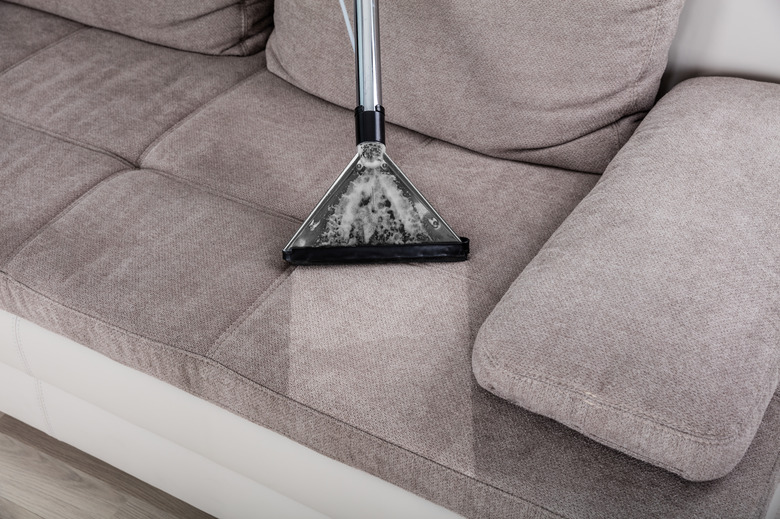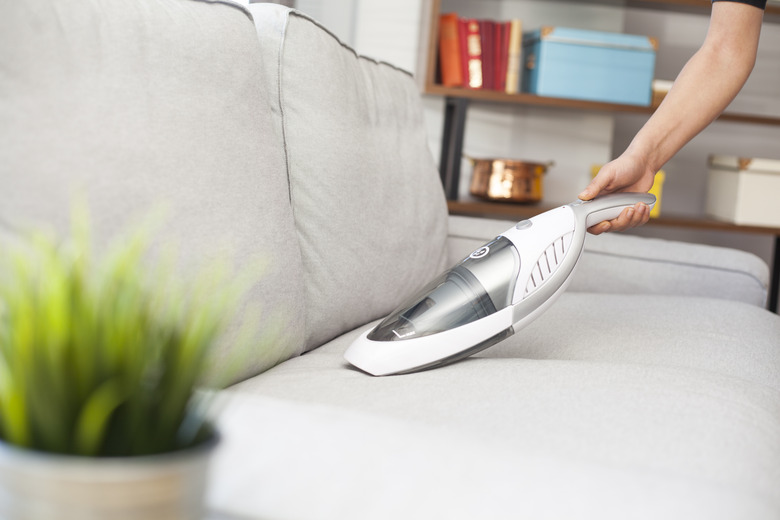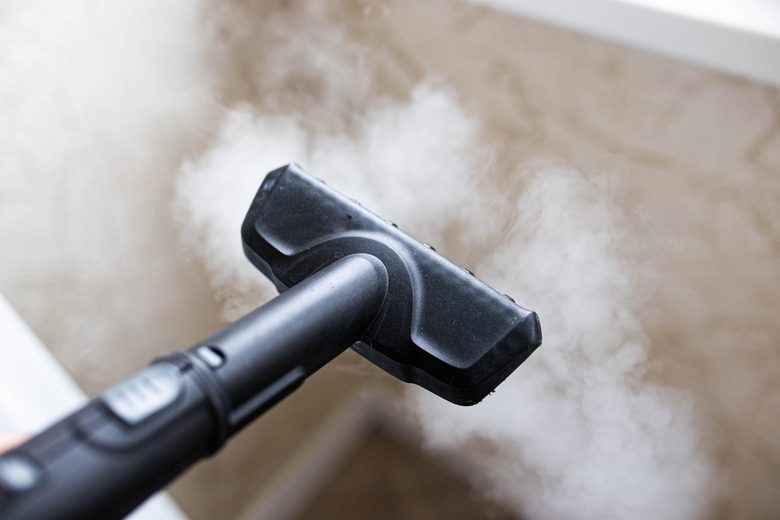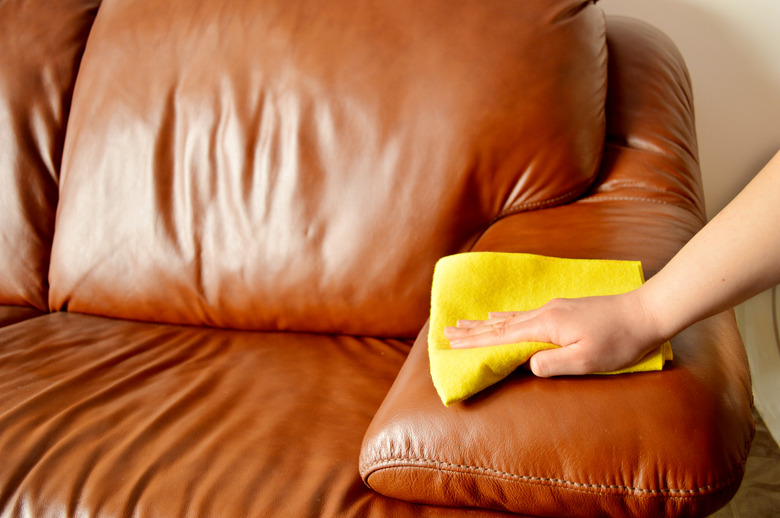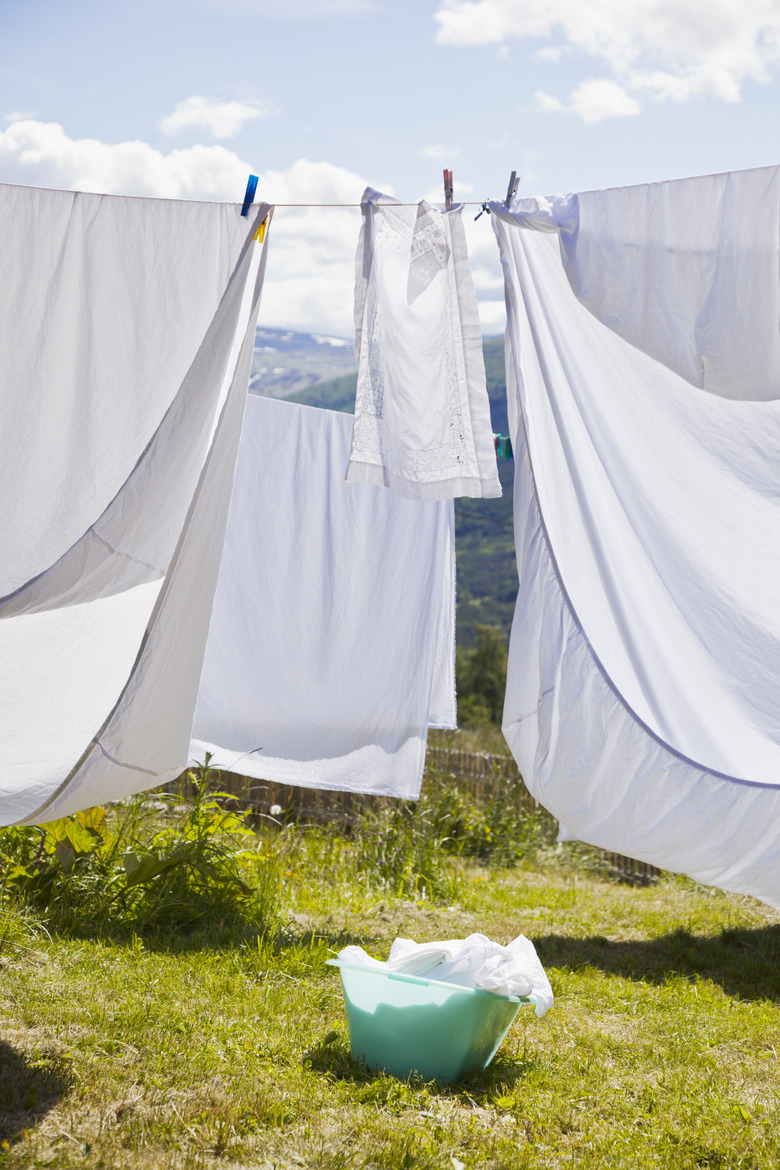How Can I Disinfect A Sofa?
We may receive a commission on purchases made from links.
A used couch might come with plush pillows and questionable cleanness; even your own well-used one possibly seats not just people and pets but also germs and allergens. Regardless of where the ick factor or unfavorable smells originated, you might be left wondering how to disinfect the big bacteria-harboring piece — without damaging it. Use the couch's upholstery type as a guide for disinfecting practices.
Warning
Use a disinfectant that's designed for your couch's upholstery type, and test it for damage or colorfastness in an inconspicuous area. Refer to the letter code on the attached manufacturer's tag, usually found on a cushion or the frame, for care and cleaning specifics — even water can ruin some materials.
Start With a Vacuum
Start With a Vacuum
Some couch-disinfecting practices kill germs but don't actually clean the upholstery, or they don't do a thorough job. Start by vacuuming the fabric thoroughly, getting down the back, along the arms, and into any creases, using an upholstery attachment. This provides the best results because much of the problem originates with what's on or embedded in the fibers, such as pet dander, skin cells, or food particles.
Use Disinfectant Spray
Use Disinfectant Spray
Disinfectant sprays for hard and soft surfaces offer a quick way to destroy couch germs. For eliminating upholstery odors, use a deodorizing spray with enzymes. A light mist of oxygen bleach or color-safe bleach diluted with water, according to the labels' recommendations, can sanitize some W code water-safe fabrics.
For S- or SW-code upholstery, use a disinfectant solvent, such as dry-foam shampoo, brush-in-style powder, or a spray bottle filled with rubbing alcohol — or even vodka — instead of a water-based mist.
Warning
Many solvents, including rubbing alcohol, are hazardous if inhaled, so refer to the label for warnings and proper use, such as opening windows for ventilation. Do not use flammable solvents around open flames, such as a wood-burning fireplace, candles, or cigarettes.
Apply Steam to the Couch
Apply Steam to the Couch
Don't discount the ability of steam (heated to about 240 degrees Fahrenheit) to destroy germs or combat a musty smell. Reduce the chance of water damage by using a dry-steam cleaner, passing the upholstery attachment over each section a few times; although the machine uses a small percentage of water to produce vapors, it won't saturate the material. If your couch can handle water and steam cleaners, use a standard steam-cleaning machine and the appropriate shampoo for odors, such as pet urine. If odors linger, allow the fabric to dry, and then mist it with scented spray disinfectant for a more comprehensive job.
Disinfect Leather Couches With Vinegar
Disinfect Leather Couches With Vinegar
Vinegar isn't just a salad-dressing ingredient; it's also a leather-safe germ-fighting, mold-busting, unpleasant-scent-ridding cleaning hero, when you use it appropriately. Dampen a soft, white cloth with a half-water, half-white-vinegar solution, and wring it out well. After a good wipe-down, dry the leather with an absorbent towel, getting in the creases and folds.
Sanitizing Slipcovers in the Sun
Sanitizing Slipcovers in the Sun
A slipcover can act as a trusty protector, guarding washable and dry-clean-only or X-code couches alike, but it needs occasional disinfecting itself. Refer to the cover's laundering tag, which may suggest a cold-water wash and low-temperature dryer setting — neither of which destroys germs. In this case, after laundering it, hang the article in the sun for several hours to let the bacteria-blasting rays wash over it before putting it back to work.
